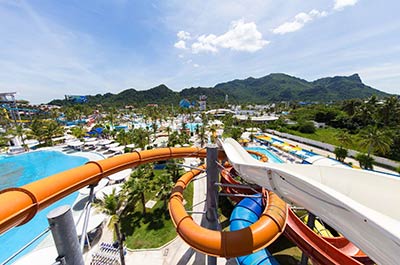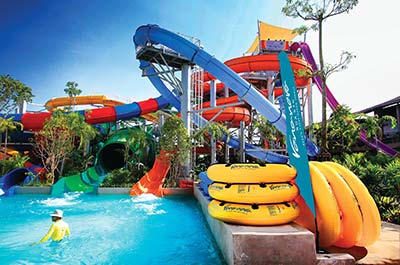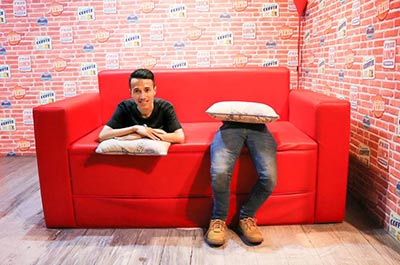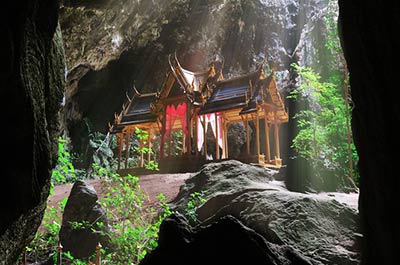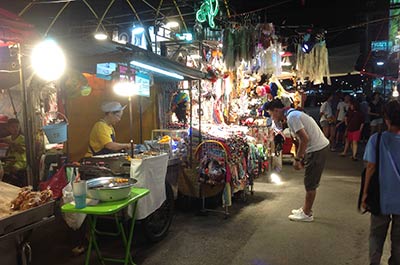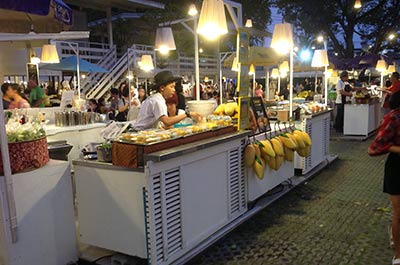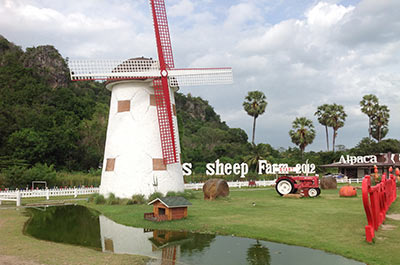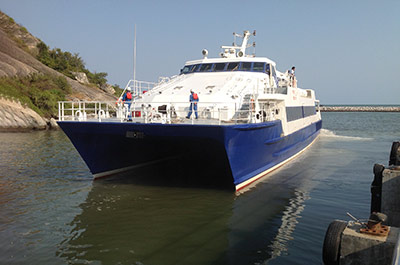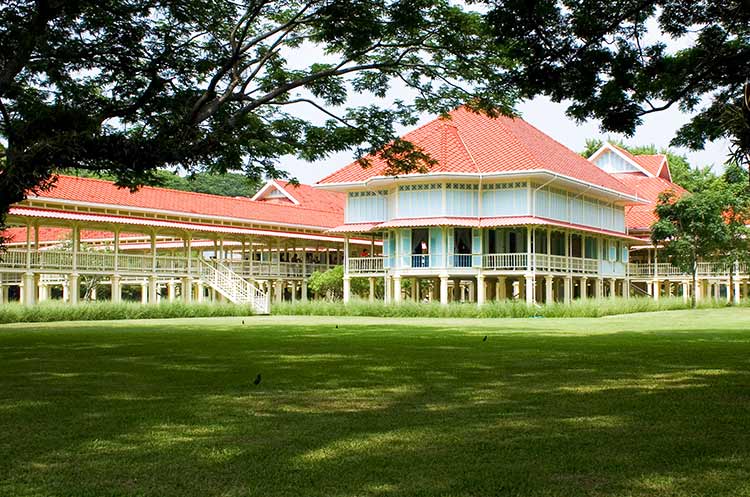
Maruekhathaiyawan Palace
Teak wood palace on the beach near Hua Hin
Maruekhathaiyawan Palace between Cha-Am and Hua Hin was build by King Vajiravudh (Rama VI) as a seaside summer retreat in 1923.
Originally, the King had a palace built on Hat Chao Samran beach, a little more North, but he was unhappy with it and decided to demolish the building and use the teak wood to construct a new palace facing the sea in Cha-Am district. The location was found convenient because Cha-Am was by then connected to Bangkok by rail and the area was beneficial to health with its forest and fresh sea air.
Entirely built from teak wood
The palace is built raised from the ground on pillars and entirely made from teak wood. Its very attractive architectural style is completely different from that of other Thai palaces.
The overall design of the palace was done by the King himself, and it was built to be a very comfortable place with excellent ventilation and niches filled with water in the pillars to keep out ants. Ercole Manfredi, an Italian architect was hired to finish the design.
King Rama VI used the palace, which name is also written as Marukhathaiyawan or Mrigadayavan, as a summer residence for him and other members of the Royal Family until his death in 1925.
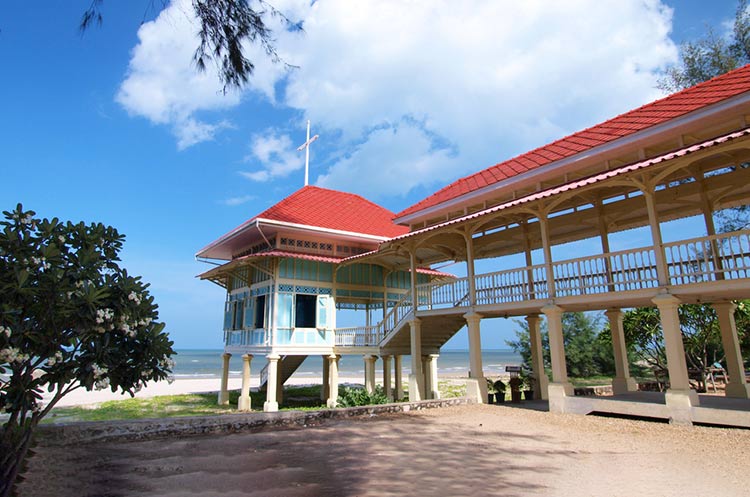
The Palace of Love and Hope
The palace, which is also called “The Palace of Love and Hope”, is made up of three sections connected by long covered walkways. Two long covered corridors connect the palace with the beach, one from the King’s personal living quarters and one from the women’s section of the palace.
The King’s personal living chambers
The section called Phisarn Sakorn consists of King Vajiravudh’s personal living chambers. There is a bedroom, a bathroom, a dressing room, a study room and a dining area. King Vajiravudh, who ruled from 1920 until 1925, was a great poet and while staying at Maruekhathaiyawan Palace wrote literature in his study overlooking the sea.
The Queen’s living quarters
The King’s wife, Queen Indrasakdi Sachi lived in the Samundra Biman section of the palace, which contained a number of rooms including a living room, a bedroom, a dressing room and a bathroom as well as a corridor leading to a bathing pavilion on the beach.
The Sewakamart section
The Sewakamart section was used for official functions, offices and a theatre where dramas were performed.
When the Royal Family would come to stay in Maruekhathaiyawan Palace for the summer, the furniture would be moved there from Bangkok.
After the King’s death in 1925, the palace was left deserted. Today, it has been fully restored and you can still see some of the King’s furniture like his writing desk with pencils and paper, sofa and bed. Walking around the palace will give you a rare insight into how the Thai Royal Family used to live almost a century ago.
After visiting the palace, you can enjoy a walk on the nature trail in the surrounding mangrove forest.
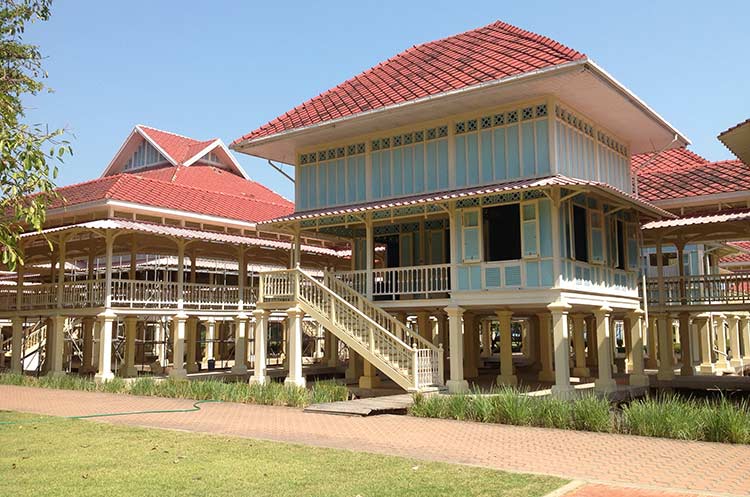
Location
Maruekhathaiyawan Summer Palace is located almost halfway between Cha-Am and Hua Hin in Phetchaburi province, some 10 kilometers South of Cha-Am and 15 kilometers North of Hua Hin inside the Rama VI army camp.
How to get there
From either place, you can easily and quickly reach it by taxi or tuk-tuk. There is also a local orange colored bus between Cha-Am and Hua Hin that will stop there on request.
From Bangkok, you can either go by taxi, which would take around three hours or by train from Hua Lamphong station to Cha-Am and from there by tuk-tuk.
Opening hours
Update 2024: After extensive renovations, the palace is still closed to the public.
The palace can be visited every day except Wednesday from 8:30 am until 4:30 pm. The ticket office closes at 4 pm.
Please take off your shoes when you go inside the upstairs area of the Palace. You can put your shoes in a cloth bag that is provided at the stairs and carry them until you exit the upper floor of the Palace.
Taking photos upstairs inside the Palace is not allowed. Please dress appropriately which means no short pants or short skirts, no sleeveless shirts. Sarong like clothing is available that you can return on exiting the palace.
Bicycles are for hire to explore the area and the surrounding mangrove nature trail.
Admission
Admission charged at the ticket booth is (Thai Baht):
Child age up to 14 years
Attractions in Hua Hin
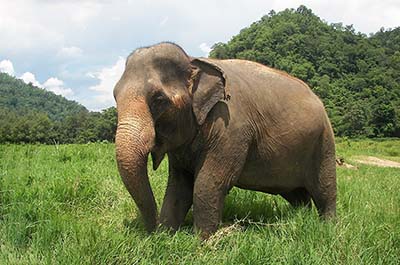
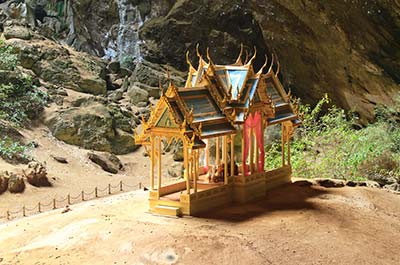
Hua Hin Tours
- Private or Group Tour
- Pick up & drop off Hua Hin hotel
- English speaking guide
Attractions Hua Hin
- Phraya Nakhon Cave
- Wild Elephant Watching
- Islands Tour by Luxury Yacht
- Vana Nava Water Park
- Cooking Classes
- Food Tours
- Where to Dine in Hua Hin
- Wat Huay Mongkol
- Cicada Market
- Night Market
- Monsoon Valley Vineyard
- Camel Republic
- Maruekhathaiyawan Palace
- Hua Hin Train Station
- Pala-U Waterfall
- Khao Luang Cave
